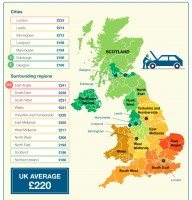Yokohama simulation technology to support rubber innovation
Yokohama Rubber has announced its development of a simulation technology for multi-objective design exploration of rubber materials. The new technology is said to have been developed to “support innovative thinking about rubber material design.” Yokohama Rubber states an aim of using such innovative thinking to “create tyres that meet the highest standards in areas that normally are at odds with each other, such as low fuel consumption and safety or ultralight weight and high rigidity.”
The new technology is viewed by Yokohama Rubber as the latest in a series of innovative technologies it has developed, a range of technologies that include Yokohama’s proprietary aerodynamic simulation and aero-acoustic noise simulation technologies, which have led to the discovery of tyre designs featuring dimples or fins that better control the airflow around the tyre, thereby contributing to greater fuel efficiency.
Tyre performance is greatly affected by the complex morphology in the rubber material, i.e. the dispersion and quantity of polymer (rubber) and filler (carbon black or silica). The new multi-objective design exploration simulation technology differs from the previous simulation methods that assumed the use of actual rubber materials. Instead, the new simulation technology creates rubber material models based on virtual morphologies, thus enabling simulations of various morphologies. By changing the morphological parameters (variables), the new simulation technology enables us to create huge-scale simulation models consisting of about one billion elements having various morphologies. A performance evaluation run on the TSUBAME2.5 supercomputer in the Tokyo Institute of Technology, confirmed that the new simulation technology can complete huge-scale computations consisting of one billion elements in just 75 minutes, a feat previously unheard of when using the finite element method.
The challenges to establishing this simulation technology were the modelling technology that enables complete control of the morphology and the large-scale viscoelastic simulation technology needed to calculate the mechanical properties of rubber material. These problems were solved thanks to the efforts of a joint research project with Professor Dominique Jeulin of MINES ParisTech / Centre de Morphologie Mathematique (CMM) in France. This joint research developed a modelling technology, the random morphological model and a new computational scheme for large-scale viscoelastic simulations. The establishment and combination of these two key technologies provided the finishing touches to Yokohama Rubber’s simulation technology for multi-objective design exploration of rubber materials.
Multi-objective design exploration is a technique for deducing knowledge useful to the design process. It focuses on organisms’ evolutionary processes and uses a multi-objective genetic algorithm to search for more optimal solutions. Yokohama Rubber’s past use of multi-objective design exploration to determine the optimal structural design for its tyres has produced some useful results, including the development of Yokohama’s low fuel consumption tyre, the BluEarth-1 EF20.
The new simulation technology for multi-objective design exploration of rubber materials comprises four modules: (1) morphology modelling that controls the morphology of the rubber material, (2) a viscoelastic simulation to calculate the mechanical properties of the virtual rubber material, (3) an evolutional computation to improve the mechanical properties, and (4) analysis of the big data generated by the evolutional computation to extract information useful to material development (data mining).




Comments